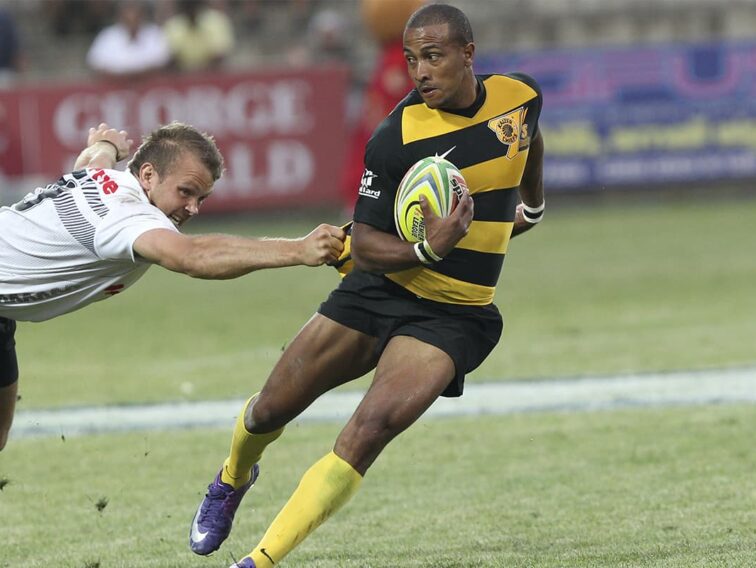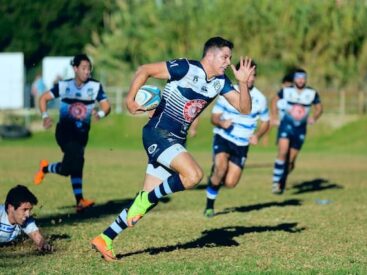The standard rugby provisions include: scrum, ruck, lineout, lineout, clean catch (tag), tackle, free kick, and penalty kick.
Scrum
The purpose of a scrum is to resume play after a minor violation or stoppage of play. Eight players from each team take part in the scrum, the players embrace each other with their arms, line up in three lines and close with their opponents. In this position, the players create a tunnel into which the scrum half throws the ball so that the first line players of either team can take possession of the ball by touching it with their feet.
A scrum is formed at the place of infringement or stoppage of play within the playing field, but not closer than 5 meters from the touchline and from the goal line. The ball is thrown into play by the team that is innocent of the infringement or is on the attack. A scrum is considered over if the ball leaves the field of play in any direction (except through a tunnel).
Ruck
The phase of the game when one or more players from each team, standing on their feet and in physical contact, group around the ball on the ground between them within the playing field. In this position, open play is terminated. Players involved in a ruck try to use their feet to recover or retain the ball without breaking the rules.
A ruck is considered successfully completed if the ball comes out of the ruck or is behind the goal line. In the event of an unsuccessful ruck (i.e. when the ruck is unplayable), the referee orders a scrum (but must allow sufficient time for the ball to come out of the ruck).
Maul
A maul is formed when one or more players from each team, standing on their feet, in physical contact and moving towards the goal, group around the player in possession of the ball. At least three players are involved in the maul: the player with the ball, and one player from each team.
A maul is considered successfully completed when the ball falls to the ground or the player with the ball leaves the maul. If the ball in the maul ends up behind the goal line, the maul is also considered completed.
Tag (clean catch)
A player is deemed to have made a clean catch or mark when, from within his own 22-meter area or in-goal, he catches the ball cleanly immediately after an opponent’s foot has kicked it. At the same time as catching the ball, the player must shout “Mark!”. After a clean catch, a free kick is awarded.
Tackle
A situation when a player in possession of the ball on the playing field is held by one or more opponents so that he falls to the ground or the ball touches the ground.
Lineout and out
The ball is considered to be out if:
- the ball leaves the field of play over the touchline after being kicked;
- the ball touches the touchline or leaves the field after any other action of the athletes;
- a player with the ball steps on the touchline or leaves the field of play;
- the player catching the ball steps on the touchline or leaves the field of play.
- The ball is put into play after it has gone out by drawing a lineout (quick throw-in). The attackers of each team line up in a row perpendicular to the touchline – the rows of players are located one meter from each other and 5-15 meters from the touchline. The ball is thrown into the corridor from the sideline between the lined up rows of players.
Athletes from both teams fight for the ball. Players can lift their teammates to increase their chances of catching the ball. A jumping player cannot be tackled, only side-to-side contact is allowed.




